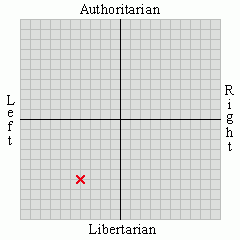Two more gyro-driven instruments were developed in the late 1920s, the gyrocompass and the artificial horizon (which has since been renamed as the attitude indicator). This is a gyrocompass, which most pilots just refer to as the "gyro:"

One of the problems with a magnetic compass is what is known as "turning error." If you turn one way, the compass initially turns faster than the airplane is turning. If you turn the other way, the compass can initially turn opposite to the turn. This example is of a "horizontal card" gyro that was commonly installed in small airplanes through the 1960s. The vertical card gyro was a lot easier to use and was developed after World War 2.
 The reason it took nearly 20 years before vertical card compasses were installed in small airplanes was simple economics. There were tens of thousands of horizontal card gyros left over after the war and they were considerably cheaper than vertical card compasses.
The reason it took nearly 20 years before vertical card compasses were installed in small airplanes was simple economics. There were tens of thousands of horizontal card gyros left over after the war and they were considerably cheaper than vertical card compasses.They were also far more durable. A horizontal card gyro made by the Jack & Heinz Co. during the war was installed in my airplane in the 1950s and it lasted until 2003. The replacement vertical card gyro lasted four years.
The second instrument was the artificial horizon:

The artificial horizon combined the bank information from the turn coordinator (see part 2) and the attitude information that the pilot could glean from both the airspeed indicator and the altimeter.
The artificial horizon did it better on several counts. First, the turn coordinator would "peg" itself if the airplane was banked more than a standard rate turn (maybe a 20 degree bank) while the artificial horizon would show bank angles of 90 degrees or more. Second, it directly showed pitch information. The little symbol in the center is the airplane, the line going across the back is the horizon, which moves as the airplane moves. The effect is to give representation of what a pilot would see if the pilot could see the real horizon.
The last instrument we need is a vertical speed indicator. It gives the rate of change for climbs and descents.

Put these three instruments together with the airspeed indicator, altimeter and the turn coordinator and you have a cluster of instruments known as the "sixpack:"

These were the instruments that were in use for instrument flight in the1930s in airliners. But they were not mandatory for instrument flight for a very long time; a pilot could legally fly in instrument conditions by "needle, ball and airspeed" for decades. The sixpack began to be commonly installed in small airplanes as an option after the war and was installed in almost all airplanes starting in the 1950s (other than specialty airplanes, such as bush airplanes, cropdusters, aerobatic aircraft and some others).
(Up until this decade, the sixpack was the way instrument flying was done. Within the last few years, almost all new airplanes capable of instrument flight have been delivered with a glass panel displays.)
But these instruments only told you the attitude, altitude and direction of flight. To know where you are going when you cannot see the ground, you need navigation information.
So stay tuned.











1 comment:
Hi,
I want to correct a misconception in your presentation of the instrument known
variously as a turn and bank, or turn and slip indicator. It doesn't indicate bank angle, or any angle, it indicates rate of turn. The artificial horizon *does* indicate bank and pitch. I have read AF manuals that called out stops on the travel of a turn and slip, but I've never seen one that acted that way.
Post a Comment